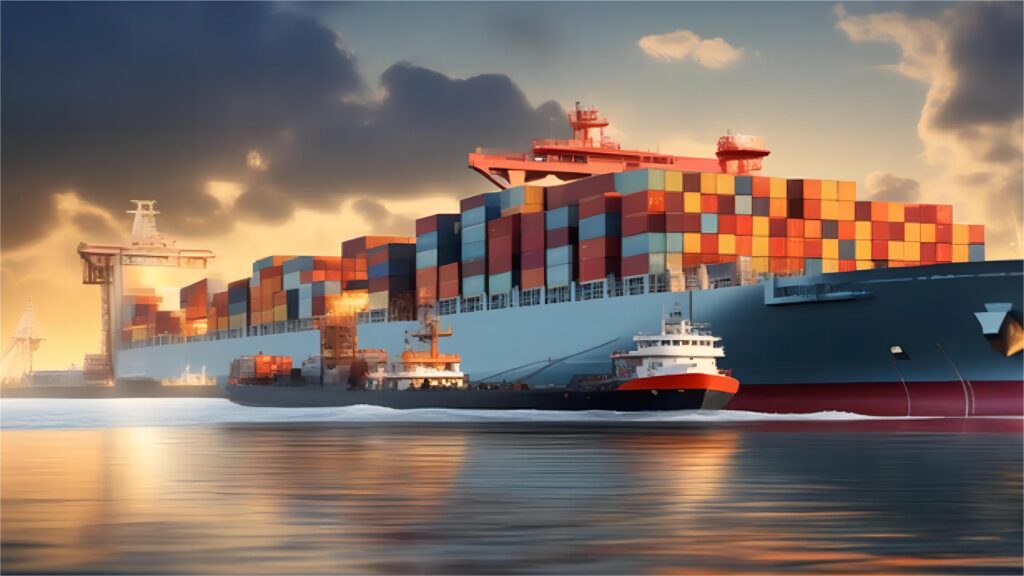- By TOP CHINA FREIGHT
- July 16, 2025
- Shipping
Mapping the China–uae Maritime Supply Chain?
Ocean shipping from China to the United Arab Emirates (UAE) is a critical link in global trade, especially for businesses in sectors like electronics, textiles, building materials, and consumer goods. With robust port infrastructure in both countries and frequent sailings, ocean freight offers a cost-effective, reliable, and scalable shipping solution for importers.
If you’re sourcing products from China to ship to the UAE—whether to Dubai, Abu Dhabi, or Sharjah—here’s everything you need to know.

1. Cost-Effective for Bulk Cargo
Ocean freight is by far the most economical shipping method for large-volume or heavy goods. While air freight may deliver faster, its cost per kilogram is significantly higher. Ocean freight allows businesses to maximize shipping volume while keeping logistics budgets under control.
Typical cost ranges (as of 2024–2025):
Pricing for ocean freight depends on cargo volume, container type, port of origin/destination, and current market conditions. Below are average estimates:
| Shipping Mode | Estimated Cost (USD) |
|---|---|
| LCL (Less than Container Load) | $40–$80 per CBM |
| FCL 20-foot Container | $1,000 – $1,600 |
| FCL 40-foot Container | $1,800 – $2,800 |
| Customs Clearance (China + UAE) | $120–$250 per shipment |
| Door-to-Door Delivery (optional) | Quoted per location and cargo size |
Prices can vary due to fuel surcharges, seasonal demand, and carrier capacity.
2. Flexible Container Options
Whether you’re a small business or an enterprise, ocean shipping offers solutions tailored to your needs:
- FCL (Full Container Load): Exclusive use of a 20ft or 40ft container for bulk or high-volume cargo.
- LCL (Less-than-Container Load): Share a container and pay only for the space you use—ideal for smaller shipments.
- Reefer, Open-Top, Flat Rack Containers: For special goods like perishables, oversized machinery, or sensitive equipment.
3.Main Sea Route from China to the UAE
Ocean shipments between China and the UAE follow well-established maritime corridors with regular sailings.
| Route Segment | Details |
|---|---|
| Departure Ports (China) | Shanghai, Ningbo, Shenzhen, Xiamen, Qingdao, Tianjin |
| Sea Route | South China Sea ➜ Strait of Malacca ➜ Indian Ocean ➜ Arabian Sea ➜ Persian Gulf |
| Arrival Ports (UAE) | Jebel Ali (Dubai), Khalifa Port (Abu Dhabi), Port of Sharjah |
| Transit Time | Typically 18–30 days depending on origin and routing |
4. End-to-End Logistics Support
To simplify the international shipping process, freight forwarders offer complete logistics services from factory pickup in China to final delivery in the UAE.
| Logistics Phase | Included Services |
|---|---|
| Factory Pickup | Inland trucking from supplier to port in China |
| Export Customs Clearance | Declaration filing, documentation, cargo inspection |
| Ocean Freight Booking | FCL or LCL space reservation, schedule management |
| Port Handling & Loading | Container stuffing, port handling, bill of lading issuance |
| Sea Freight Transit | Vessel tracking, real-time updates |
| Import Customs in UAE | Submission of required documents, duty & VAT management |
| Delivery in UAE (optional) | Local trucking to warehouse, distribution center, or customer site |
| Add-ons | Insurance, warehousing, consolidation, transloading |
5. Sustainable & Scalable Shipping
Ocean shipping is significantly more energy-efficient than air freight, making it the more environmentally responsible choice. For businesses aiming to lower their carbon footprint while still moving large volumes, sea freight is the most sustainable solution.
And thanks to increasing automation at ports and smart logistics systems, ocean shipping is now faster and more flexible than ever before.
Need a Shipping Quote?
Click below to get a free, no-obligation quote from TJ China Freight.
We’ll respond within 24 hours with the best shipping options for your cargo.
FAQ
How long does it take to ship by sea from China to the UAE?
Transit time is usually 18–30 days, depending on the port combination and carrier route. For example:
- Shanghai to Jebel Ali: ~25–30 days
- Shenzhen to Jebel Ali: ~20–25 days
Are there any import duties in the UAE?
Yes. The standard import duty is 5%, though some items (e.g., alcohol, tobacco) are taxed higher. Certain categories (like raw materials) may be exempt.
